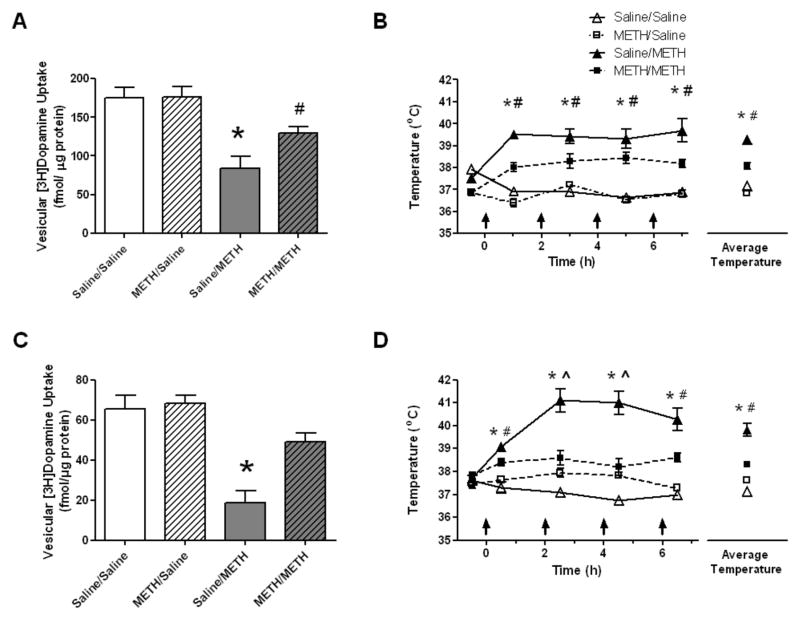Figure 1.
Rats were designated to receive a single injection of METH (7.5mg/kg, s.c.) or saline vehicle (1 ml/kg, s.c.) on two consecutive days weekly for six consecutive weeks. One week after the final treatment (i.e., at a time at which rats had attained the age PND90), rats received four injections of METH (7.5 mg/kg/injection, s.c., 2-h intervals as indicated by the arrows) or saline vehicle (1 ml/kg, s.c.). Rats were decapitated 1 hour (panels A and B) or 7 days (panels C and D) later. Vesicular dopamine uptake deficits and core body temperatures were significantly attenuated in rats given METH during development when a four-injection METH challenge was given. *Values for saline pretreated/METH challenged (saline/METH) rats are significantly different from METH pretreated/saline challenged controls (METH/saline) and saline pretreated/saline challenged controls (saline/saline; p < 0.05). #Values for METH pretreated/METH-challenged (METH/METH) rats significantly differ from saline challenged controls (METH/saline and saline/saline; p<0.05). ^Values for the METH/METH group significantly differ from the saline/METH and saline/saline groups (p < 0.05). Data are expressed as means ± SEM.

